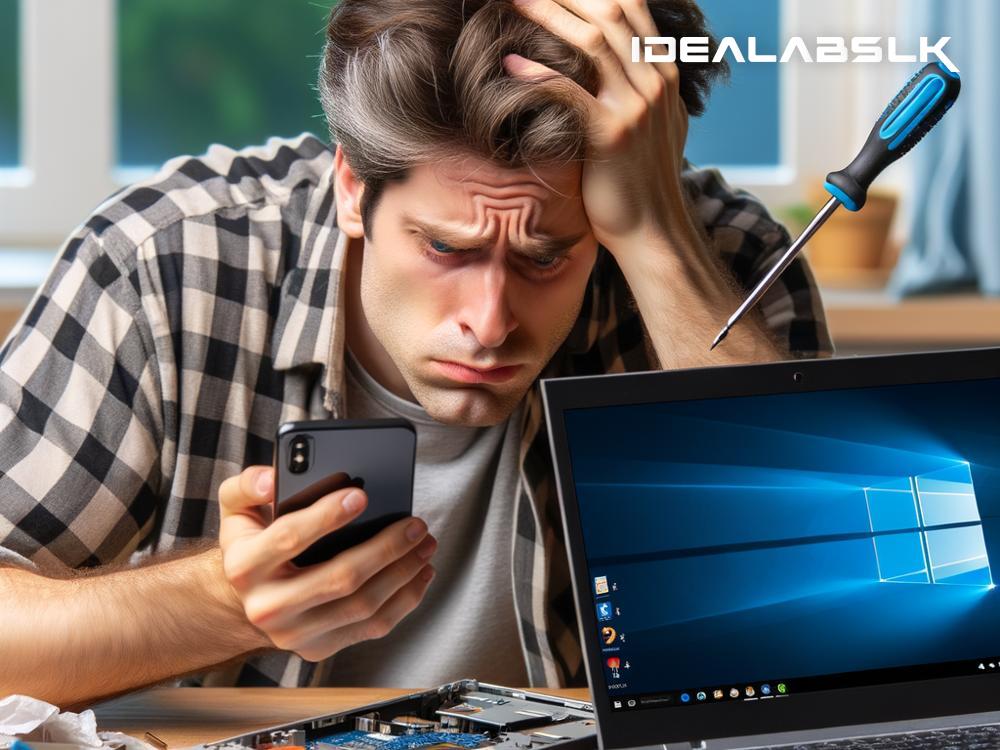How to Fix a 'Touchpad Not Working' on Windows Laptops
Encountering a touchpad that won't respond on your Windows laptop can be frustrating, especially when you're in the middle of important work or just browsing through your favorite sites. The touchpad, for many users, is an essential laptop component, making any malfunction quite the hindrance. But fret not! In this article, we'll explore simple and effective ways to breathe life back into your unresponsive touchpad.
Check Your Touchpad Settings
Sometimes, the solution is right under our noses. The first thing you should do is check whether the touchpad has been accidentally disabled. Many laptops offer a shortcut to enable or disable the touchpad, often involving the Fn key plus one of the function keys (F1-F12). Look for a symbol that resembles a touchpad, usually on one of the F keys, and try pressing Fn plus that key.
Additionally, delve into your Windows settings:
- Press the Windows key, type "touchpad" in the search box, and hit Enter.
- Ensure the toggle under "Touchpad" is set to On.
Update or Reinstall Your Touchpad Driver
Drivers are the software that lets your hardware communicate with your operating system. An outdated or corrupt driver can lead to your touchpad not working. Here's how to tackle driver issues:
-
Update Driver: Open Device Manager by right-clicking on the Start button and selecting it from the menu. Find "Mice and other pointing devices," expand it, right-click your touchpad (it might be named as ELAN or Synaptics), and choose "Update driver." Follow the prompts and let Windows find the best driver for you.
-
Reinstall Driver: In the Device Manager, right-click your touchpad under "Mice and other pointing devices," and choose "Uninstall device." Restart your laptop, and Windows will automatically reinstall the driver.
Check for Windows Updates
Sometimes, the problem could be with Windows itself. Microsoft frequently releases updates, which can include fixes for peripheral devices like your touchpad:
- Press the Windows key, type "update," and press Enter.
- Click on "Check for updates" and install any available updates.
Perform a Hard Reset
If software tweaks don't resolve the issue, performing a hard reset might. This will restart your laptop's hardware and potentially fix the touchpad issue. Here's a general way to do it, but it might vary slightly depending on your laptop model:
- Turn off your laptop.
- Disconnect all external devices, including USB drives, docks, and monitors.
- If your laptop has a removable battery, take it out. If not, just proceed to the next step.
- Press and hold the power button for about 15 seconds.
- Reconnect the battery and power cable.
- Turn on your laptop.
This process restarts your laptop's internal components, potentially resolving any hardware conflicts that could be affecting the touchpad.
Check for Physical Damage
It's also possible that your touchpad has suffered some physical damage. This might not always be visible, so if your touchpad continues to be unresponsive after trying all the above fixes, and especially if it's been subjected to pressure, spills, or drops, it might be time to contact a professional repair service.
Consider Using an External Mouse or Touchpad
If you're in a pinch and need a functioning laptop, using an external mouse or touchpad can be a temporary solution while you figure out the issue with the built-in touchpad. This can be particularly useful if you need your laptop for work or studies and can't afford downtime.
Conclusion
A non-functional touchpad on a Windows laptop can throw a wrench in your productivity, but in many cases, it's a problem that can be resolved with some troubleshooting. Start with the simplest solutions like checking your touchpad settings and making sure it's not disabled. Moving on to updating or reinstalling drivers, checking for Windows updates, and performing a hard reset can also resolve more complex issues. If all else fails, assessing for physical damage and considering professional repair might be your best bet. Remember, an external mouse can always serve as a temporary workaround. With a little patience and some DIY spirit, you'll likely get your touchpad back in working order.

